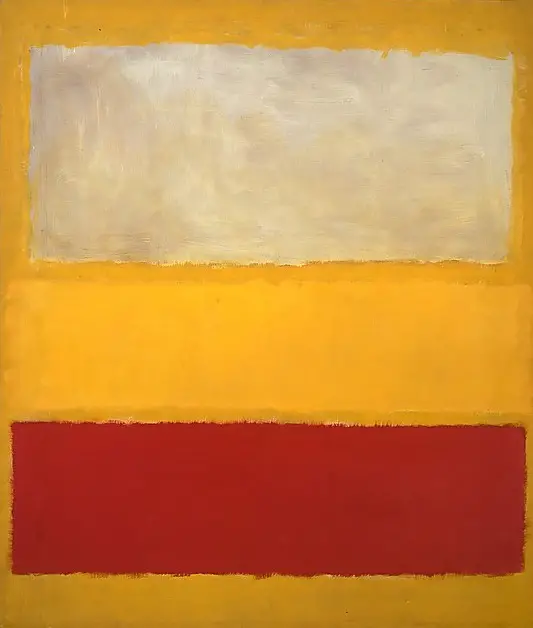The simplification of means and structure was not a formal exercise, but a vehicle through which to experience powerful, unverbalized emotion and revelation. Rothko's forms are reduced, but they are not geometric. Edges and boundaries are soft, frayed, feathered – merging imperceptibly as one ethereal field of color transitions into another, producing an effect that is almost halo-like. Luminosity is achieved with translucent veils of diluted pigment, sometimes applied with rags and sponges rather than brushes. In some areas, the paint is scumbled; in other places, it acts as a stain, saturating the canvas fibers.
Using various types of wet media and varying the thickness of his paint layers, he sometimes changed the orientation of his pictures in the studio, depending on how their colors harmonized. Indeed, in No. 13 (White, Red, on Yellow), some drips travel upward, indicating that Rothko worked on this picture upside down for a period of time. In Rothko's work, the large scale of his paintings envelops the viewer, thereby creating a palpable and intimate experience. "Historically," he said, "the function of painting large pictures is painting something very grandiose and pompous. The reason I paint them, however... is precisely because I want to be very intimate and human."

